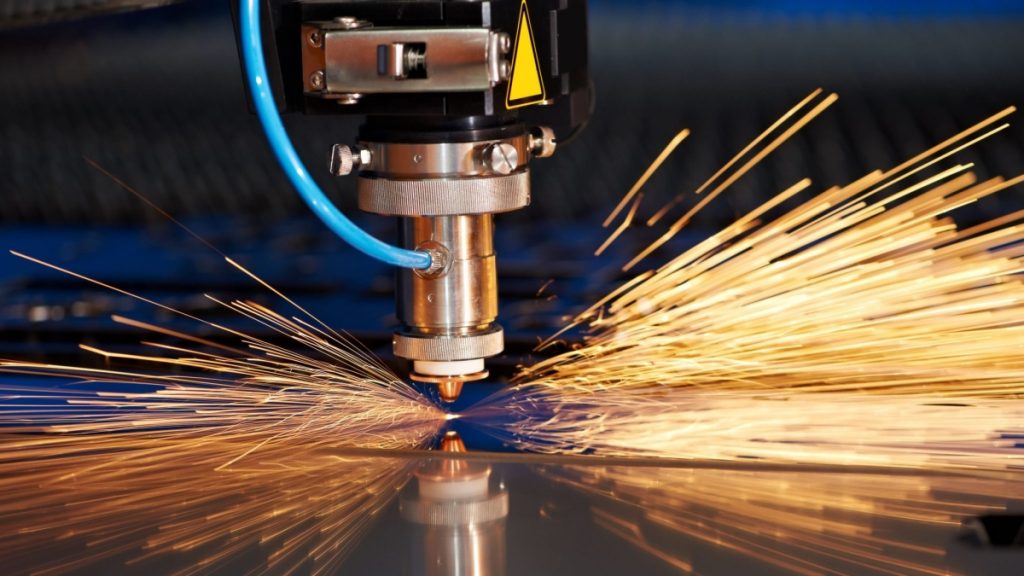The History of Sheet Metal Fabrication: From Ancient Techniques to Modern Mastery
Sheet metal fabrication, the art of shaping and forming metal sheets into desired structures, has a rich history that dates back to ancient times. The origins of sheet metal fabrication can be traced to ancient civilizations such as Egypt and Mesopotamia, where metalworkers utilized primitive tools and techniques to create functional objects made from various metals.
Key innovations in sheet metal fabrication occurred during the Industrial Revolution, when the introduction of steam-powered machinery enabled mass production and more complex designs. This period also marked the development of new metalworking processes, such as rolling mills and stamping machines, which revolutionized the industry and paved the way for modern sheet metal fabrication.
The Process of Sheet Metal Fabrication: Unleashing Creativity through Technical Expertise
Sheet metal fabrication requires the use of various tools and equipment to transform raw metal sheets into intricate and functional objects. Some essential tools for sheet metal fabrication include shears, punches, benders, and welding equipment. These tools enable fabricators to cut, shape, bend, and join metal sheets with precision.
The process of sheet metal fabrication involves several steps, starting with the design and layout of the desired object. The metal sheet is then cut to size, using shears or cutting tools. Next, the metal is shaped and formed using techniques such as bending, folding, and rolling. Joining methods such as welding, riveting, or soldering are used to assemble the different components of the object. Finally, the fabricated piece is finished and polished to enhance its appearance and durability.
Precision and attention to detail are crucial in sheet metal fabrication. Every measurement, cut, and bend must be executed accurately to ensure the final product meets the desired specifications. Skilled fabricators possess a deep understanding of metal properties and fabrication techniques, allowing them to bring creativity and artistry to their work while maintaining structural integrity.
Exploring the Versatility of Sheet Metal in Creative Design Projects
Sheet metal is a versatile material that offers endless possibilities for creative design projects. Its malleability and strength make it suitable for both artistic and functional applications.
Unlocking the Artistic Potential of Sheet Metal in Sculpture
Sheet metal has been widely used in sculpture throughout history, from ancient Greek bronze statues to modern works of art. Sculptors are drawn to the material’s ability to be shaped into intricate forms, allowing them to express their creativity and bring their artistic visions to life. Sheet metal sculptures can range from abstract and organic designs to realistic representations of objects or figures.
Incorporating Sheet Metal in Functional and Decorative Objects
Sheet metal fabrication extends beyond artistic endeavors and finds its way into everyday objects that serve functional and decorative purposes. Metal furniture, lighting fixtures, and home accessories are just a few examples of how sheet metal can be integrated into interior design. The durability and versatility of sheet metal make it ideal for creating sturdy and visually appealing objects that enhance the aesthetics of any space.
Pushing Boundaries: Architectural Applications of Sheet Metal
Architects have also embraced sheet metal as a transformative material in the field of construction. Its ability to be molded into various shapes and sizes allows for the creation of unique architectural designs. From façades and roofing to interior finishes and structural components, sheet metal offers architects the freedom to push boundaries and create visually striking buildings that stand out.
Mastering the Craft: Tips and Techniques for Sheet Metal Fabricators
Becoming a skilled sheet metal fabricator requires a combination of training, experience, and a deep understanding of the craft. Here are some tips and techniques to help fabricators hone their skills and excel in their work.
Honing Your Skills: Essential Training and Education for Sheet Metal Fabrication
Training and education play a vital role in developing expertise in sheet metal fabrication. Aspiring fabricators can enroll in trade schools or apprenticeship programs to gain hands-on experience and learn from experienced professionals. Additionally, staying updated with the latest techniques and advancements in the industry through workshops, seminars, and online resources is crucial for continuous skill improvement.
Enhancing Efficiency: Time-saving Strategies for Sheet Metal Fabricators
Sheet metal fabrication requires precision and efficiency to meet project deadlines and maintain profitability. Fabricators can optimize their workflow by utilizing computer-aided design (CAD) software to create accurate blueprints and streamline the production process. Investing in advanced machinery and equipment can also improve efficiency, enabling fabricators to handle larger volumes of work and achieve higher levels of precision.
Navigating Challenges: Troubleshooting in Sheet Metal Fabrication
Like any craft, sheet metal fabrication comes with its own set of challenges. Fabricators must be prepared to troubleshoot and overcome common issues that may arise during the fabrication process. Whether it’s addressing material warping, resolving welding defects, or finding solutions for complex designs, problem-solving skills are essential for achieving successful outcomes.
In conclusion, sheet metal fabrication is a skilled art form that combines technical expertise with creative vision. From its ancient origins to modern applications, sheet metal fabrication continues to evolve, enabling fabricators to craft beauty with precision. Whether it’s in sculpture, functional objects, or architectural design, sheet metal offers endless possibilities for creativity and innovation. By mastering the craft and embracing new techniques, sheet metal fabricators can continue to push boundaries and create remarkable works of art.




